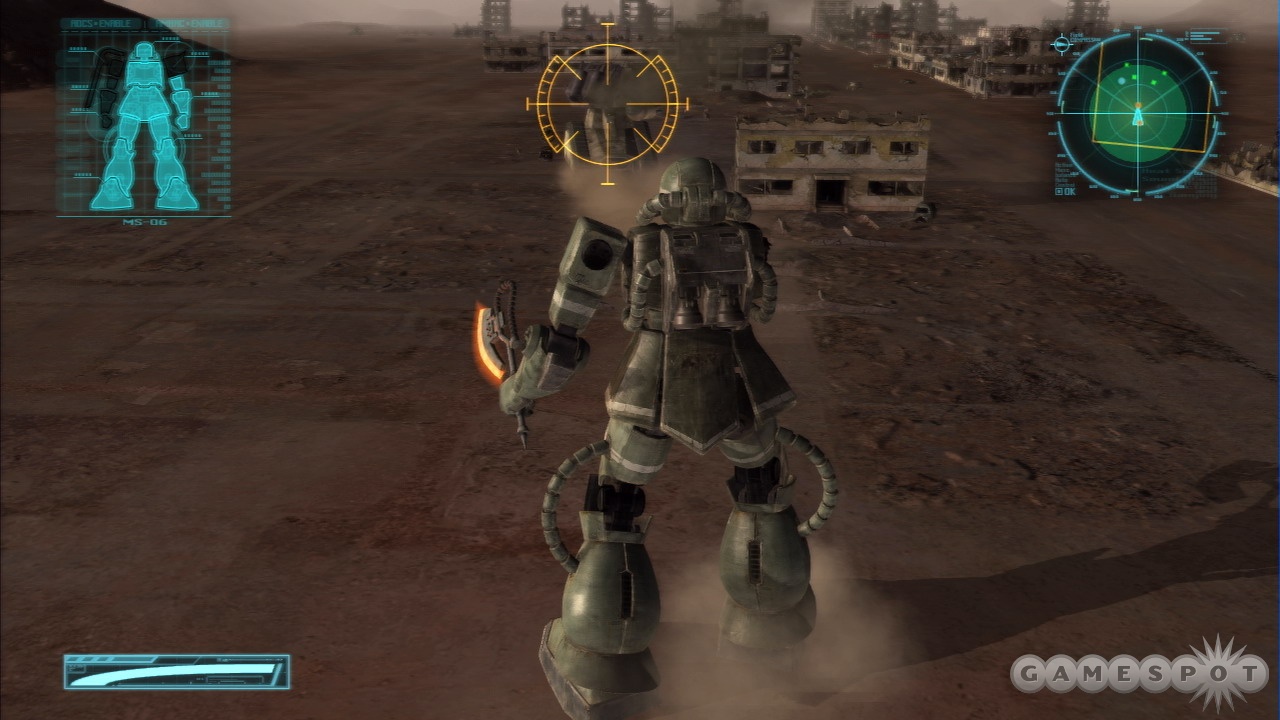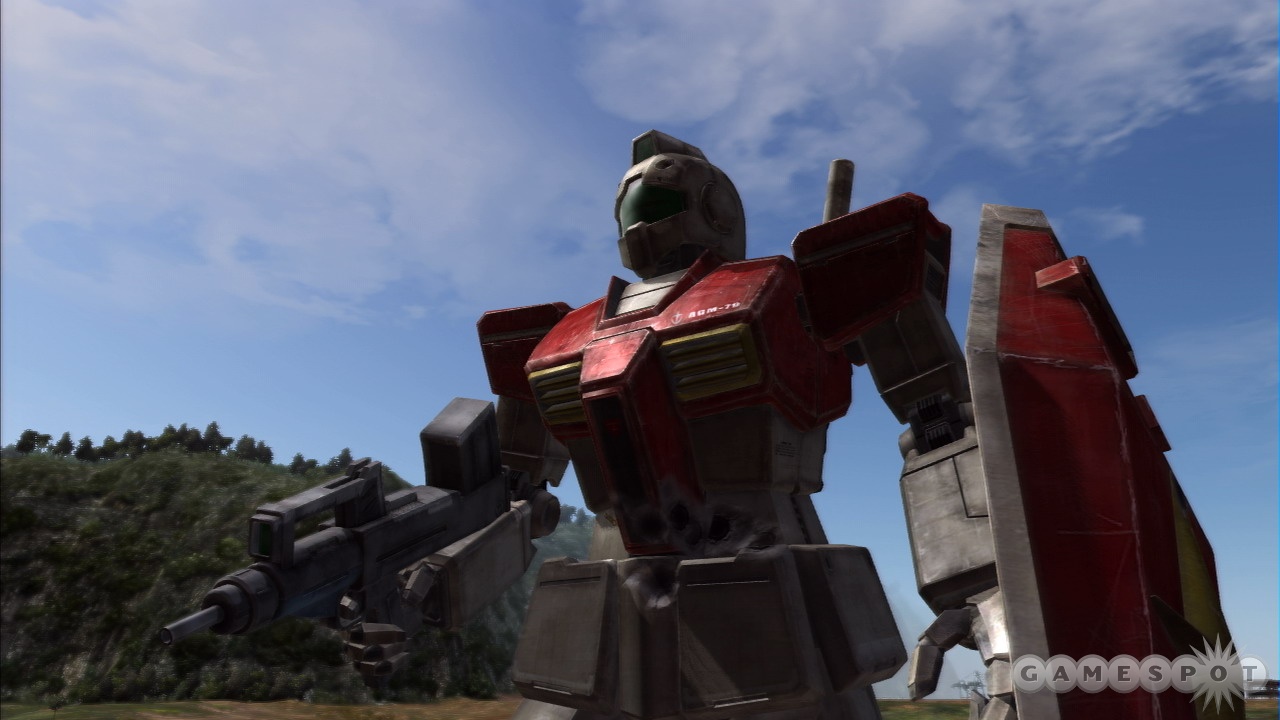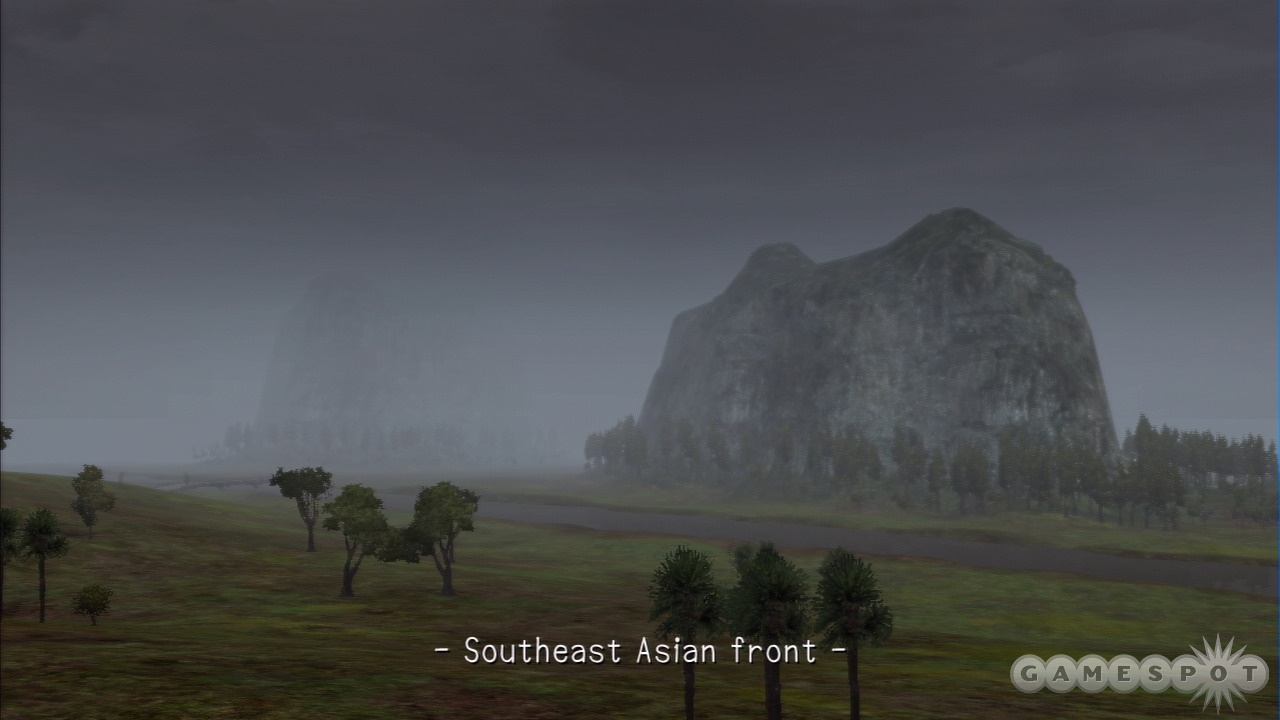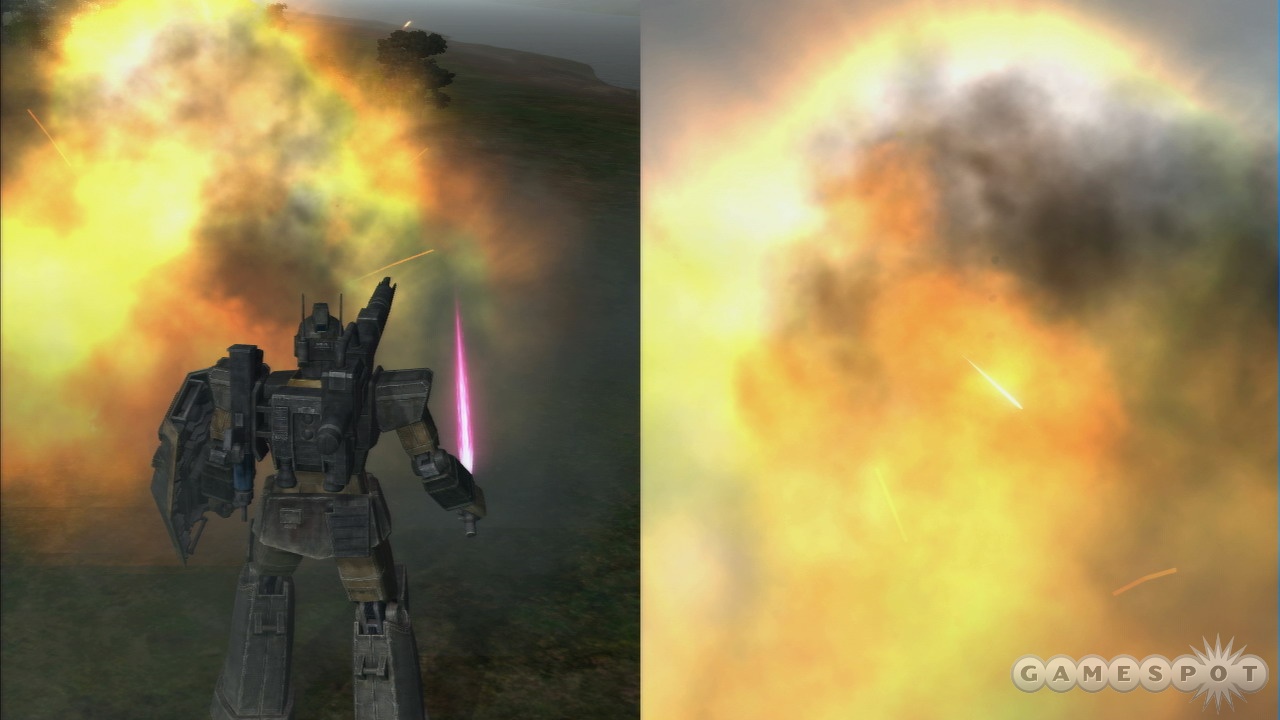It would seem that Mobile Suit Gundam: Crossfire has the makings of a good game. After all, what more do you need than a couple dozen towering mechs strapped with machine guns, rocket launchers, and beam sabers? How about a frame rate that occasionally approaches the double digits? How about online multiplayer? How about some semblance of thoughtful, intelligent game design? Crossfire has none of these things. Instead, it offers a couple dozen good-looking mechs, but that's about it. In fact, aside from its packaging and price, Crossfire gives very little indication of being a PlayStation 3 game. The graphics are poor, the frame rate is ridiculously slow, the gameplay is primitive, there's no online play, and simply no reason to play this game.

In the world of Gundam, there are two forces locked in an ongoing struggle for dominance: The Earth Federation and the Principality of Zeon. The game doesn't go into detail about why the two forces are fighting, so if you're looking for some context, you'll have to look to the plethora of Gundam anime, manga, and fan-created Web sites for more information. All you need to know is that both factions have some awesome weaponry in the form of massive mechanized "suits" at their disposal, which meet on the barren, fog-laden battlefields of futuristic Earth, where they trade blows until one side emerges the victor.
There are two modes of play in Crossfire. The single-player campaign is where you'll spend most of your time because the multiplayer is a joke. The only way to play this game multiplayer is two-player split-screen battles. There is no online play, which seems ridiculous because the majority of other PlayStation 3 launch titles have at least some sort of online support. The split-screen multiplayer that you get instead is completely shallow and almost unplayable because of a busted frame rate. You each choose a mobile suit (all of which have to first be unlocked in the single-player game) and battle until one mech is left standing. It's the kind of multiplayer experience that has been tacked on to second-rate licensed games for years, and it will do nothing to extend your time with this game.
The single-player campaign in Crossfire is much more involved, but that isn't saying very much. You can play as either the Earth Federation force or the Zeon force. Each side has its own selection of mobile suits, but regardless of which force you're fighting for, you'll encounter many of the same battles. Even though you'll be playing the same battles, you'll be doing so from different sides, which makes each mission feel unique to each faction. The campaign structure is based on a daily cycle, and you can accept or ignore missions as you see fit. Missions have a time limit, so you have to complete each one before a certain date or else it will be unavailable for the rest of the game. As days pass, your pilots heal from battle and your mobile suits are repaired. It also takes a set number of days to modify your mobile suits, have new ones delivered, and so on. You have to manage your time to an extent, but it's not such a constraint that you'll ever feel rushed to meet the mission deadlines. The campaign ends when you reach December 31 or finish the final battle. The campaign progression isn't exactly open-ended because you'll end up in the same place no matter what you do, but the structure works well if only because it gives you some freedom to pick and choose your missions.
Skipping a few of the optional missions won't have much of an effect on your overall campaign, but there is some incentive for completing as many missions as possible. At the end of each mission, you're given a rank that is based on your time, remaining health, and enemies destroyed. You're also awarded points based on how you perform, which can be redeemed to purchase new mobile suits, hire new pilots, and upgrade your current fleet of mobile suits. The upgrade system is very shallow and not especially fulfilling. You can upgrade each mobile suit in one of three areas: attack, which will increase the damage inflicted on enemies; weapons, which gives you access to new weapons and lets you carry more ammunition; and defense, which increases the amount of damage you can take. You'll also see an appreciable performance boost as you level up your mechs, but if you're looking for a level of customization that is typical of other mech combat games, you won't find it in Crossfire.
Most of the mobile suits are humanoid in design, with two legs, two arms, a head, and a torso. They run around and behave much like humans, but because the suits are several stories tall and weigh hundreds of tons, they tend to be slow and clumsy. Wisely, the mech engineers have equipped each suit with rocket boosters, which are essential because they let you move fast enough to evade most attacks. Without the rocket boosters, the mobile suits move so unbearably slow that you're better off waiting the few seconds for them to cool off so you can use them again than trying to move around unaided. You move your mobile suit with the left analog stick and adjust the camera with the right analog stick. Oddly, the motion-sensor feature of the Sixaxis controller goes completely unused.

Each mobile suit can be equipped with a melee weapon, which is assigned to the triangle button. These melee weapons can be extremely powerful but, of course, are only effective at close range. Not only does getting in close put you directly in harm's way, but poor collision detection makes melee fighting very frustrating. You'll often whiff pathetically when you take a swing, even if you're right next to your target.
Most of the time, you'll rely on ranged weapons, such as machine guns, beam cannons, and missile launchers that can be equipped to your mobile suit. These weapons are assigned to the square and R1 buttons. You can press the R2 button to activate sniper mode to pick off enemies from afar, but it's easier to use the lock-on targeting feature. By pressing the L1 button, you'll lock on to a target, and the camera will stay focused on it. This lets you circle strafe and fill your enemy full of lead until it dies or you run out of ammo. In each level, there is also a supply depot that you can visit to replenish your ammo, but doing so will put you out of commission for about 10 seconds and leave you completely vulnerable to attack.
The controls take some getting used to, and there's no tutorial to ease you into your new role as a mobile suit pilot. There are a few training missions that let you practice your mech combat without running the risk of failing a mission, but these training missions don't provide any detail about how the controls work. However, if you've played any of the many Gundam games for the PlayStation 2, the control scheme will feel very familiar here.

Depending on the battle, you can have up to two other mobile suits accompany you. You can't directly control these other suits, but you can issue commands using the D pad. However, you can issue commands only to pilots who are subordinate to you in rank. Even with backup, you'll end up doing the vast majority of the work yourself because your teammates aren't very responsive (or apparently coherent) most of the time. You'll often see your allies running into walls, doing nothing, walking around aimlessly, or just taking all kinds of enemy fire.
Most of the missions in the game require you to destroy all of the enemies in a certain area. There are also escort missions and defend-the-base missions, but even then, the action always boils down to killing all of the enemies before they kill you. The battlefields are all confined within an invisible force field that is passable to your enemies but not to you. It's extremely annoying and awkward looking to chase down an enemy only to reach an invisible wall and not be able to move. Adding to the sense of confinement is a very short draw distance that blankets every level in dense fog, so you can never see very far. As a result, you often won't even be able to see enemies until they magically appear within your firing range.
There are about 25 missions for each faction that take place on unspecified battlefields in and around Australia and Southeast Asia. There's a desert area, a mountain area, a canyon area, a naval base, a military base, crumbling city ruins, a mighty river, and a few others. The locations are all about as exciting as they sound, with bland backgrounds, undefined topography, unnatural-looking water, paper-thin trees that don't initially react when you walk through them, and a very light smattering of destructible structures, such as antenna towers, fuel storage tanks, and military buildings. But these things do nothing to make the levels more interesting, and the biggest disparity between levels is usually the color of the ground textures.
The only part of the game that looks good is the mobile suit models. There are more than 30 different suits in the game, and when standing still, they each look detailed and appropriately imposing. One especially nice touch is the way that the mobile suits get dismembered in the midst of combat but keep on fighting. As long as you have one good leg and a torso, you can keep fighting. If you lose both of your arms, you'll have to kick to attack; if you lose your head, you won't have any radar; if you bust a leg, you'll end up moving very slowly, and so on. You can also hack enemy mobile suits to bits, but it's difficult to target a specific area of the enemy's suit. So when you do end up chopping off an arm, it's usually just a matter of luck.
Unfortunately, the cool, mutilated mechs are overshadowed by the technical problems with this game, the most glaring of which is that once these large, detailed models start moving, the frame rate staggers. Even before the action starts, when you're just walking around an empty level, the game moves so slowly that it's like watching stop-motion animation. When you add a few more mechs to the mix, the game slows to the point that you can just about count each frame of animation as it goes by. The disappointment is compounded by the lackluster special effects that make things like firing rockets, swinging beam sabers, and blowing up huge mechs sadly unsatisfying. The explosion effects are also weak and subdued, and when you destroy an enemy mobile suit, it simply falls over and disappears in a puff of smoke. You'd expect these hulking masses of metal to have appropriately hulking weapons, but instead, you get a floppy pink sword and cannons that feel like pea shooters. Of course, everything looks best on a high-definition display. Running the game in 720p gives an enhanced level of detail and widescreen aspect ratio, but even with those improvements, the game pales in comparison to other PlayStation 3 games. If you're playing this game on a standard definition television, you'll have a hard time making out the text in the menus, and the in-game graphics could easily be mistaken for those of a PlayStation 2 game.

The sound effects are just as lame as the visuals in Crossfire. The weapons don't sound the least bit loud or forceful, and the explosions are muted. Even the clunky noise of the mobile suits walking sounds weak and repetitive. Although there are no characters to speak of in the game, you will get to hear voice clips in battle. You'll usually hear the same few phrases from your enemies, along the lines of, "Die you bastard!" You'll also have a tinny, toneless female voice to tell you of updated mission objectives, which is at least helpful even if it doesn't sound good. The music is dramatic and a bit overdone, but it's one of the few elements of this game that doesn't feel lazily thrown together at the last minute. That said, it's not award-winning music by any means, and you'll likely forget it as soon as you quit playing the game.
Mobile Suit Gundam: Crossfire feels like a mediocre budget PlayStation 2 game that was ported to the PlayStation 3 and slapped with a $60 price tag. Diehard Gundam fans with a lot of cash to burn might enjoy looking at the mobile suits, but other than that, this game has nothing going for it. Even if you could get past the horrid frame rate problems, lackluster presentation, and lack of online multiplayer, the gameplay in Crossfire is practically identical to the half-dozen or more Gundam games that appeared on the PlayStation 2. If you're looking for a game to show off what your PlayStation 3 is capable of, Mobile Suit Gundam: Crossfire should be your last choice of all the launch titles.